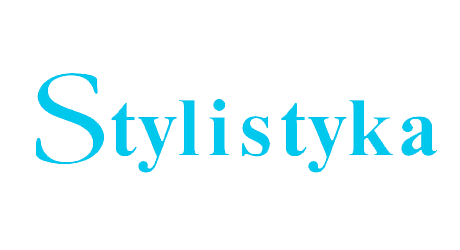Chlebda W., 2005, Szkice o skrzydlatych słowach. Interpretacje lingwistyczne, Opole: Wydawnictwo Uniwersytetu Opolskiego.
Google Scholar
Chlebda W., 2013, Korpusologia użytkowa dla początkujących i zaawansowanych. – Na tropach korpusów. W poszukiwaniu optymalnych zbiorów tekstów, red. W. Chlebda, Opole: Wydawnictwo Uniwersytetu Opolskiego, s. 7–15.
Google Scholar
Czyżewski M., Kowalski S., Piotrowski A. (red.), 1997, Rytualny chaos. Studium dyskursu publicznego, Kraków: Wydawnictwo Aureus.
Google Scholar
Dobek-Ostrowska B., 2012, Komunikowanie polityczne i publiczne. Podręcznik akademicki, Warszawa: Wydawnictwo Naukowe PWN.
Google Scholar
Duda B., Lisczyk K., 2018, Narzędzia cyfrowe w polonistycznej dydaktyce akademickiej – zastosowania, możliwości, perspektywy, „Forum Lingwistyczne”, 5, s. 143–154.
Google Scholar
Fliciński P., 2013, Narodowy Korpus Języka Polskiego w warsztacie frazeografa i frazeologa tradycjonalisty. – Na tropach korpusów. W poszukiwaniu optymalnych zbiorów tekstów, red. W. Chlebda, Opole: Wydawnictwo Uniwersytetu Opolskiego, s. 31–44.
Google Scholar
Fras J., 2005, Komunikacja polityczna. Wybrane zagadnienia gatunków i języka wypowiedzi, Wrocław: Wydawnictwo Uniwersytetu Wrocławskiego.
Google Scholar
Górski R.L., 2012, Zastosowanie korpusów w badaniu gramatyki. – Narodowy Korpus Języka Polskiego, red. A. Przepiórkowski, M. Bańko, R.L. Górski, B. Lewandowska-Tomaszczyk, Warszawa: Wydawnictwo Naukowe PWN, s. 291–299, https://nkjp.pl/settings/papers/NKJP_ksiazka.pdf (dostęp: 26.02.2024).
Google Scholar
Górski R.L., Łaziński M., 2012, Reprezentatywność i zrównoważenie korpusu. – Narodowy Korpus Języka Polskiego, red. A. Przepiórkowski, M. Bańko, R.L. Górski, B. Lewandowska-Tomaszczyk, Warszawa: Wydawnictwo Naukowe PWN, s. 25–36, https://nkjp.pl/settings/papers/NKJP_ksiazka.pdf (dostęp: 26.02.2024).
Google Scholar
Hebal-Jezierska M., 2013, Podstawowe zasady korzystania z korpusów przy badaniu języka. – Na tropach korpusów. W poszukiwaniu optymalnych zbiorów tekstów, red. W. Chlebda, Opole: Wydawnictwo Uniwersytetu Opolskiego, s. 17–30.
Google Scholar
Hunston S., 2010, Corpora in Applied Linguistics, Cambridge: Cambridge University Press.
Google Scholar
Hunston S., 2022, Corpora in Applied Linguistics, Cambridge: Cambridge University Press.
Google Scholar
Kamińska-Szmaj I., 1996, Slogan reklamowy – budowa składniowa, „Poradnik Językowy”, 4, s. 13–22.
Google Scholar
Kochan M., 2002, Slogany w reklamie i polityce, Warszawa: Wydawnictwo Trio.
Google Scholar
Ożóg K., 2004, Język w służbie polityki. Językowy kształt kampanii wyborczych, Rzeszów: Wydawnictwo Uniwersytetu Rzeszowskiego.
Google Scholar
Partington A., Duguid A., Taylor Ch., 2013, Patterns and Meanings in Discourse: Theory and Practice in Corpus-Assisted Discourse Studies (CADS), Amsterdam–Philadelphia: John Benjamins Publishing Company.
Google Scholar
Pęzik P., 2012, Wyszukiwarka PELCRA dla danych NKJP. – Narodowy Korpus Języka Polskiego, red. A. Przepiórkowski, M. Bańko, R.L. Górski, B. Lewandowska-Tomaszczyk, Warszawa, s. 253–279, http://hdl.handle.net/11089/1326 (dostęp:15.03.2023).
Google Scholar
Pęzik P., 2020, Budowa i zastosowania korpusu monitorującego MoncoPL, „Forum Lingwistyczne”, 7, s. 133–150, https://doi.org/10.31261/FL.2020.07.11 (dostęp:15.03.2023).
Google Scholar
Piotrowski T., Grabowski Ł., 2013, Interpretacja danych frekwencyjnych z korpusów językowych: opis pewnych problemów (na kilku przykładach z życia wziętych). – Na tropach korpusów. W poszukiwaniu optymalnych zbiorów tekstów, red. W. Chlebda, Opole: Wydawnictwo Uniwersytetu Opolskiego, s. 59–71.
Google Scholar
Radomski A., Bomba R. (red.), 2013, Zwrot cyfrowy w humanistyce, Lublin: E-naukowiec.
Google Scholar
Reboul O., 1980, Kiedy słowo jest bronią, tłum. J. Arnold. – Język i społeczeństwo, red. M. Głowiński, Warszawa: Czytelnik, s. 299–337.
Google Scholar
Suchomska J., Urzędowska D., 2021, Działania protestacyjne Strajku Kobiet w ujęciu teorii nowych ruchów społecznych, „Dyskurs & Dialog”, 1, s. 9–22, 10.5281/zenodo.5040790 (dostęp: 29.06.2022).
Google Scholar
Śleziak M., 2020, Projekt Słownika haseł politycznych (1918–2018). – Leksykografia w różnych kontekstach, red. M. Bańko, E. Rudnicka, W. Decyk-Zięba, Warszawa: Wydawnictwa Uniwersytetu Warszawskiego, s. 289–301.
Google Scholar
Śleziak M., 2022, Jako obiekt, jako subiekt. Kobiety w polskich hasłach politycznych XX i XXI wieku, „Forum Lingwistyczne”, 9, s. 1–12, https://doi.org/10.31261/ FL.2022.09.03 (dostęp: 15.03.2023).
Google Scholar
Śmiełowska N., Wabnic K., 2019, Rozmowa egzaminacyjna – wybrane cechy stylu wypowiedzi egzaminatora i egzaminowanego. Analiza korpusowa, „Studia Linguistica”, XXXVIII, s. 117–135, https://doi.org/10.19195/0137-1169.38.8 (dostęp: 15.03.2023).
Google Scholar
Słowniki
Google Scholar
Bańko M., Słownik dobrego stylu, czyli wyrazy, które się lubią, Warszawa: Wydawnictwo Naukowe PWN.
Google Scholar
Praktyczny słownik współczesnej polszczyzny, t. 1–50, red. H. Zgółkowa, Poznań: Wydawnictwo Kurpisz.
Google Scholar
Uniwersalny słownik języka polskiego, red. S. Dubisz, Warszawa: Wydawnictwo Naukowe PWN (dostęp na licencji w serwisie PWN: https://usjp.pwn.pl/).
Google Scholar
Wielki słownik języka polskiego, red. P. Żmigrodzki, Kraków: Instytut Języka Polskiego PAN, https://wsjp.pl/.
Google Scholar


 https://doi.org/10.25167/Stylistyka34.2024.18
https://doi.org/10.25167/Stylistyka34.2024.18
